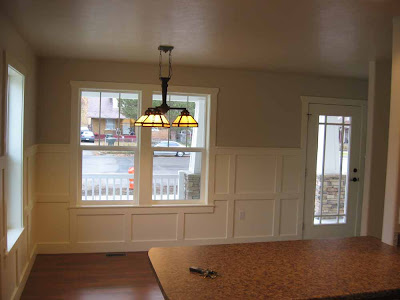I recently closed a transaction that involved owner financing. Given the tumultuous nature of the mortgage market, it is likely that we will see more seller financing soon.
It might be beneficial to give a quick review of how ownership and conventional financing work in order to understand how owner (aka seller financing) works.
Lets review:
CASH PURCHASE TRANSACTION

This is the most strait forward transaction. The black arrows indicate ownership or a participating interest. In this case the buyer paid cash for a home. He then receives title and owns the home. Very straight forward.
FINANCED PURCHASE TRANSACTION

This is the scenario we are most familiar with. Since we don't save enough to buy our homes outright these days, we find a bank willing to give us a loan. In this case, the "Old Mortgage Company" has agreed to give the buyer a loan. The home is collateral for the home and the bank has the right to take possession of the home if the buyer doesn't make monthly principal and interest payments (represented by the green arrow). The bank has an interest in the existing mortgage through an instrument called a Trust Deed. The Trust Deed is what allows them to foreclose on the buyer if there is a default. The Deed is recorded on the title of the property. Therefore we have represented this as black arrows tieing the bank to the mortgage which is tied to the home.
So what happens if a buyer wants to purchase a property and a seller wants to sell a property but no mortgage company can give a loan...even to the highly qualified buyer?
STRAIGHT OWNER FINANCED TRANSACTION

This transaction is a little less familiar but easy to explain. In this case, the seller has paid off the property or owns it out right. This seller may be the original cash buyer from our first chart. Now, the buyer for the property doesn't qualify or doesn't want a conventional mortgage; but, in the seller's eyes, the buyer is a good credit risk. Therefore, the seller agrees to "finance" the transaction. In this case, the buyer might pay a negotiated down payment to the seller and then have the rest of the equity in the home "loaned" to him. The buyer agrees to make monthly payments to an escrow company who in turn makes payments to the seller. The loan amount, interest rate, and payments are all accounted for by the escrow company and the seller now becomes like a bank...making interest. Notice that the seller, like the Old Mortgage company from before, has a Trust Deed on the property and can foreclose if the buyer does not make timely payments. The home is still collateral for the loan from the seller.
Now not everyone has a home that is paid for. In fact, only about a third of American's homes have no mortgage. That leaves a lot of folks out there that may want to sell a property but have an existing mortgage.
How is it possible to sell a home with seller financing if it has an existing mortgage?
ALL-INCLUSIVE OWNER FINANCING TRANSACTION

This is the most complicated form of seller financing but is probably the most necessary in today's marketplace. In this instance, the buyer can't get a loan even though they are a good credit risk. Meanwhile, the seller has an existing mortgage from the Old Mortgage Company that needs to be paid. The All-Inclusive Seller Financing transaction is our work-around to this dilemma. In this scenario, the Old Mortgage company keeps their Trust Deed on the home. They still demand monthly payments. However, the seller creates an All-Inclusive Note and Trust Deed which "wrap" around the existing mortgage. This allows the buyer to have title conveyed to him "subject to" the existing Old Mortgage Company financing. The scenario plays out like this: the buyer makes monthly payments to the escrow company toward the seller's new loan . The escrow company takes that money and makes a payment to the Old Mortgage Company to make sure they are happy. Then, the difference (if there is any) goes to the seller as profit. If the buyer stops making payments, the seller can foreclose through the power of the Trust Deed.
Lets pretend for a moment the escrow company wasn't involved and the buyer made direct payments to the seller. If the seller stops making payments to the Old Mortgage Company, they will foreclose on the seller and in turn on the new buyer. To avoid this possibility, I absolutely recommend using an escrow company as the best way to keep this arrangement clean and properly accounted for. It's good to trust those whom you make business arrangements with. Its even better to hire an impartial third-party to make sure the trusted parties are doing what they are supposed to.
CONTACT ME if you would like to learn more about how these arrangements work.





























